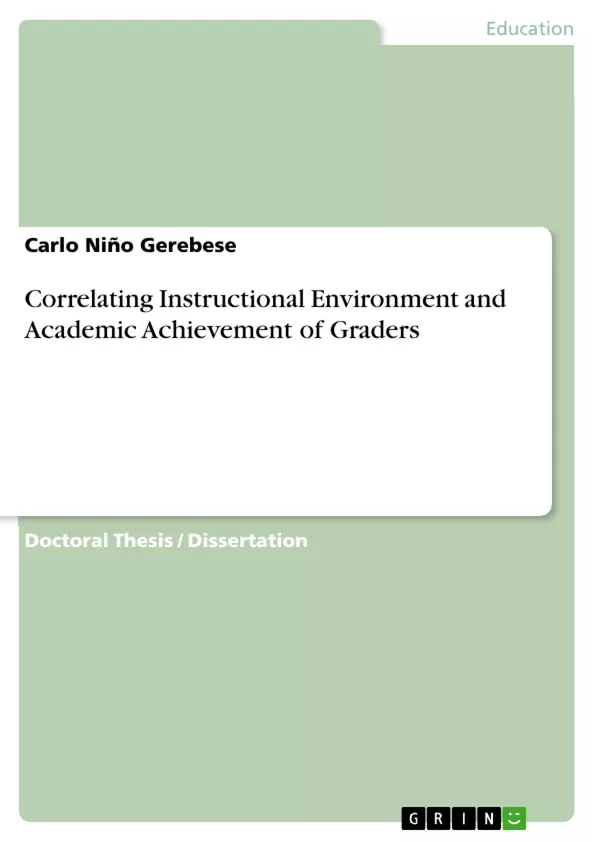The study determined the relationship between the academic environment and the academic achievement in the core subjects of the Grade 6 learners of two schools as basis for learning worksheets. The study was centered on the areas concern; profile of the teachers and learners; results of the Periodical Tests in the five core subjects; extent of the factors affecting the academic achievement of the learners as to learners themselves, family, learning environment and teachers. The Descriptive Method was used employing the questionnaires to assess the achievement profile of the Grade 6 learners. Treatment of the data used statistical tools of percentage, weighted mean, and test of significant relationship.
It was found out that majority of the respondents were 11 years of age and females; parents’ highest educational attainment was High School Graduate; had combined family income within the range of Php 5 000 – Php 10 000; 7 and above members in the family; and were living in a duplex. The result of the Periodical Test in the five core subjects were interpreted as Low Mastery. All of the results did not meet the Planning Standards of 75% Performance Level (PL) as prescribed by the Department of Education (DepEd). Moreover, the study reveals that the identified factors – learners, family, school, and teachers affected the academic achievement of the learners in school. To improve the abovementioned performances of the learners, learning worksheets are proposed to be used.
Inhaltsverzeichnis (Table of Contents)
-
- INTRODUCTION
- Rationale of the Study
- Theoretical Background
- THE PROBLEM
- Statement of the Problem
- Significance of the Study
- RESEARCH METHODOLOGY
- Method Used
- Flow of the Study
- Environment
Zielsetzung und Themenschwerpunkte (Objectives and Key Themes)
This research aims to investigate the correlation between the instructional environment and academic achievement of Grade 6 learners in two schools. The study explores the factors influencing academic achievement, such as learner characteristics, family background, learning environment, and teacher practices. The objective is to identify areas for improvement in the learning environment to enhance student performance in core subjects.
- Relationship between instructional environment and academic achievement
- Factors influencing academic achievement of Grade 6 learners
- Performance of Grade 6 learners in core subjects
- Profile of learners and teachers
- Assessment of learning environment and its impact on student achievement
Zusammenfassung der Kapitel (Chapter Summaries)
- Chapter 1: This chapter introduces the research problem, outlines the rationale and significance of the study, and provides a theoretical framework for the investigation. It also presents the research methodology, detailing the methods used, the flow of the study, and the study's environment.
Schlüsselwörter (Keywords)
This study focuses on the relationship between instructional environment and academic achievement in core subjects, examining factors affecting student performance. Key concepts include Grade 6 learners, core subjects (English, Mathematics, Science, Filipino, and Araling Panlipunan), factors influencing academic achievement, learning environment, and descriptive methods. The study utilizes statistical tools such as percentage, weighted mean, and tests of significant relationship to analyze the data.
- Citation du texte
- Carlo Niño Gerebese (Auteur), 2021, Correlating Instructional Environment and Academic Achievement of Graders, Munich, GRIN Verlag, https://www.grin.com/document/1148350



